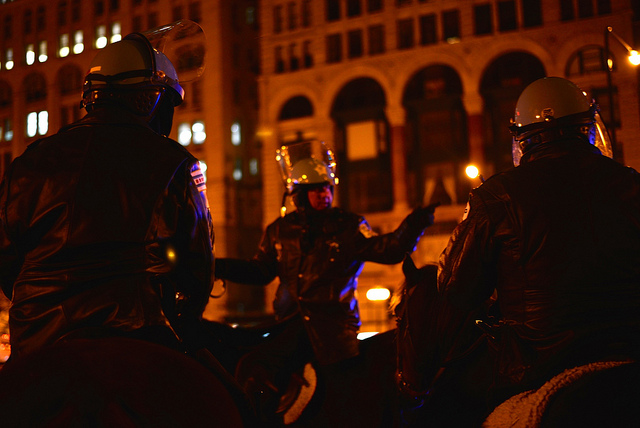Newly-Released Files Show Chicago Police Officers Punching, Choking, Shooting Citizens
By aaroncynic in News on Jun 3, 2016 5:31PM
The city has released hundreds of files, including audio and video, on Chicago police shootings, in what its touting as an unprecedented move toward transparency Friday morning.
"The policy we are implementing today is a major step forward to promote transparency, and it makes us one of the leading cities in America to guarantee timely public access to this breadth of information involving sensitive police incidents," said Mayor Rahm Emanuel in a statement. "It is important to remember the thousands of hard-working men and women who quietly do dangerous and difficult work to keep us safe each and every day."
The trove of data on times that Chicago police officers discharged their guns comes half a year after the release of a harrowing video showing a cop fatally shoot black teenager Laquan McDonald 16 times. The video release fueled citywide pushes for more transparency from the Chicago Police Department and prompted a federal Department of Justice investigation into CPD. It also prompted the firing of ex-police chief Garry McCarthy.
The 101 files can be accessed in a new data portal shared online by the Independent Police Review Authority Friday morning. The IPRA, the organization tasked with reviewing incidents in which police shot someone and other possible incidents of police misconduct, was overhauled late last year on the heels of the outcry over McDonald's shooting. Many believe that Chicago police officers, members of the police union and City Hall employees attempted to cover up the disturbing October 2014 shooting, which would explain why the cop who shot McDonald was not charged for murder until over a year after the fact.
The majority of the files are of "firearms incidents," according to the data portal. In addition, there are 25 "incidents in police custody," two of "other use of force" and none listed under "taser discharge." The files contain either audio, video, or police reports of various incidents or a mixture of information. Some of the video was captured by police dashboard cameras, pod cameras and in some cases, from bystanders and inside stations.
Video from one "other use of force" case shows a handcuffed man being led into a hospital room with a bed. A few seconds in, the officer leading him inside pushes him towards a wall, punches him in the face and pushes him onto the bed, and appearing to hit him a few more times. A lawsuit filed by the victim says that the officers involved violated his constitutional rights through the use of excessive force and the "code of silence." According to the Chicago Tribune, court documents allege that the practices of the police department allowed the man to suffer injuries because
"defendants had good reason to believe that their misconduct would not be revealed or reported by fellow officers or their supervisors, that their false, incomplete, and misleading reports would go unchallenged by these supervisors and fellow officers, from the police Superintendents, Police Board, and Directors of IPRA on down, and that they were immune from disciplinary action, thereby protecting them from the consequences of their unconstitutional conduct."
The second "other use of force" incident shows a man conversing with an officer standing near a desk in a station. After the man paces back and forth a bit, the officer reaches out and grabs his throat and pushes him towards a wall. He then begins to choke him and try to force him towards the ground. A second officer behind the desk casually walks over and appears to attempt to help the first bring the man back to his feet. The victim is then led away. In both cases, no other information—be it audio or incident reports—is currently available on the IPRA portal.
City officials told the Tribune that up to half of the 100-some cases are still under IPRA investigation. Some of the material is "sensitive," officials warned, because they show graphic images of Chicagoans being beaten or shot by police. Overall, the data dump is part of a new push by the city to release information on police misconduct investigations to the public in a more timely manner.
In the future, police will have 60 days to make shooting videos available online.
The Fraternal Order of Police was more than a little unhappy with the information dump. Politico wrote this morning that in an email to members, FOP president Dean Angelo said that a meeting between the union, PBPA and SEIU turned more than "contentious" and called the release "irresponsible." Angelo added:
“It is our hope that the Department, the City and IPRA consider our advice and add audio as well as an explanation of what the video shows. It is sad when, with all the talk about transparency and communication, they decide to operate in this manner.”
